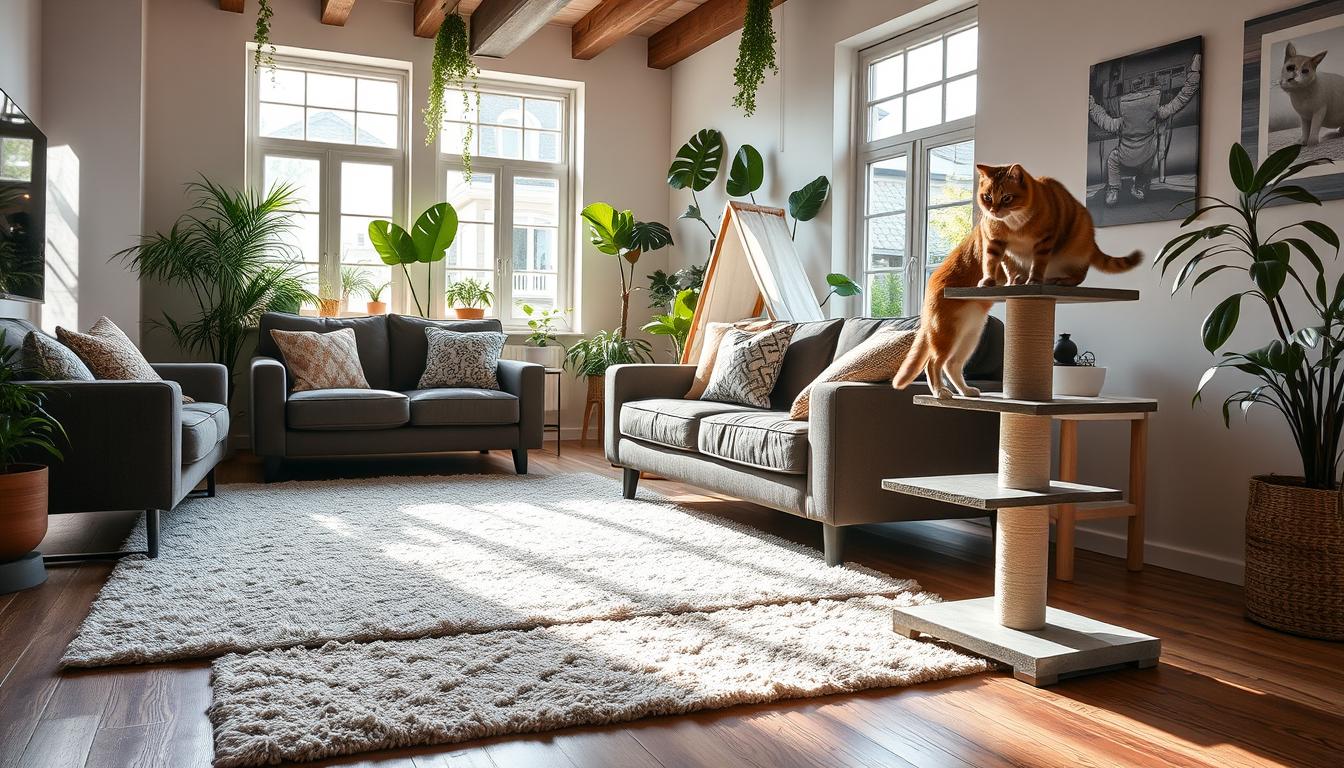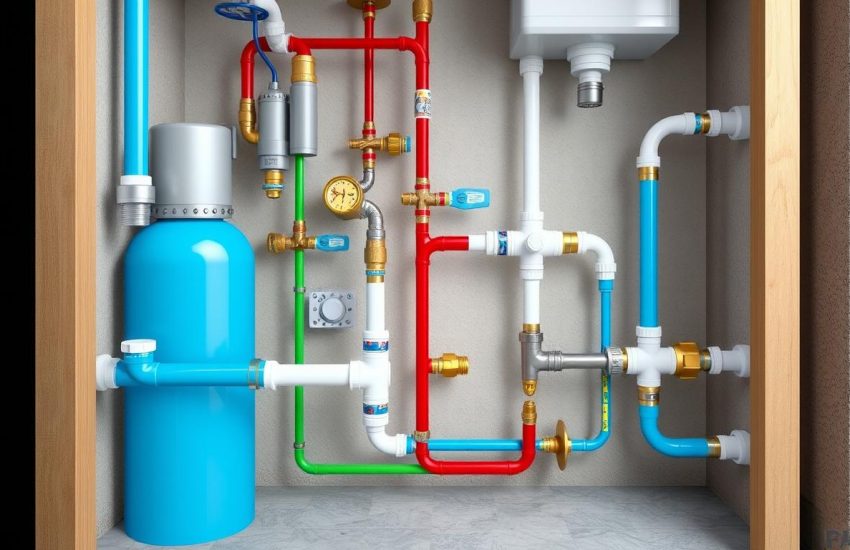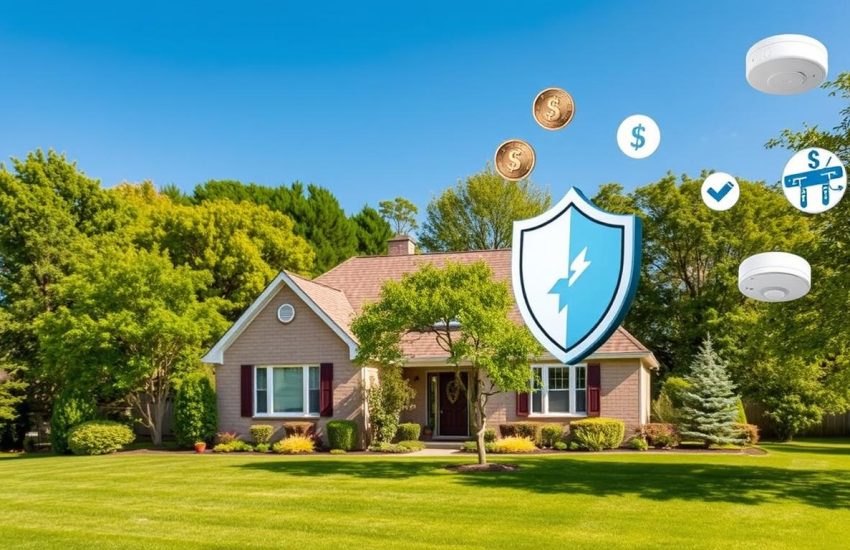Pet-Friendly Upgrades: A Complete Guide for Homeowners
Ever think how your home can make your pets happier? In the U.S., 90.5 million families have pets. As homeowners, we always want to make our homes better for our beloved pets. Pet-friendly upgrades are more than just a passing trend. They show we care for every family member, including those with paws.
There are many affordable pet-friendly upgrades like vinyl flooring. Other options include custom feeding stations and special grooming areas. Many homeowners consider their pets’ needs when doing home renovations. Whether you’re new to pet ownership or just want to make your pet’s life better, this guide can help. It shows how to create a pet haven without giving up style or spending too much.
Key Takeaways
- Understanding the benefits and necessities of pet-friendly home renovations.
- Exploring cost-effective and stylish solutions for pet-friendly living spaces.
- Guidance on whether to take on projects DIY or to seek professional help.
- Tips on enhancing pets’ living conditions for increased well-being.
- Insight into the latest trends in pet-centric home improvements.
- How these renovations can contribute to your home’s overall value.
Why Focus on Pet-Friendly Upgrades?
It’s important to understand the trend of pet-friendly home renovations today. Homeowners and pet parents should know this. With 68% of Americans having pets, making homes pet-friendly is a smart move. It not only helps the pets but also can increase your home value.
Adding features like easy-to-clean floors can help with pet fur. This is a problem for 65% of pet owners. Almost half of all homeowners now include pets in their remodeling plans. It shows how many people think these upgrades are important. Adding things like feeding stations and outdoor spaces makes a home more appealing. It’s noted by 39% and 34% of people redoing their homes.
There are a few reasons homeowners do these renovations. They make sure pets are safe and comfy. But, they also make homes more tempting to buyers. Pet-specific upgrades like hidden dog crates and automatic pet doors are now common. They bring both convenience and durability to a home.
When it comes to money, pet-friendly features are a big deal. Homes that are good for pets attract 75% of homebuyers with pets. They would not buy a perfect home if it doesn’t fit their pet’s needs. Adding pet-friendly features is more than just making a house look good. It’s about raising its home value and appeal.
Cool pet accessories and durable materials are setting new trends. Features from companies like Forbo Flooring Systems and Sunbrella are popular. They offer convenience and last a long time. These upgrades make a home attractive to a lot of buyers, especially Millennials and Gen X.
So, the focus on pet-friendly home renovations is changing real estate. Homes that welcome pets are nicer to live in and worth more. For pet parents and investors, these changes are an investment in the future. They’re not just trends.
DIY vs Professional Help
When looking to make our homes pet-friendly, we face a choice. Do it ourselves or call in the pros. This choice depends on our skills, the project’s complexity, and costs. DIY pet-friendly upgrades are fun and can save money on pet-friendly upgrades. Yet, for hard tasks, pros might be needed for safety and quality.
Cost often guides this choice. What pros charge can vary a lot. For example, general contractors might ask for $70 to $130 an hour. Plumbers range from $45 to $200 an hour. With these rates, the DIY way can look better for saving money. But, pros offer valuable skills that are worth it, especially for big changes at home.
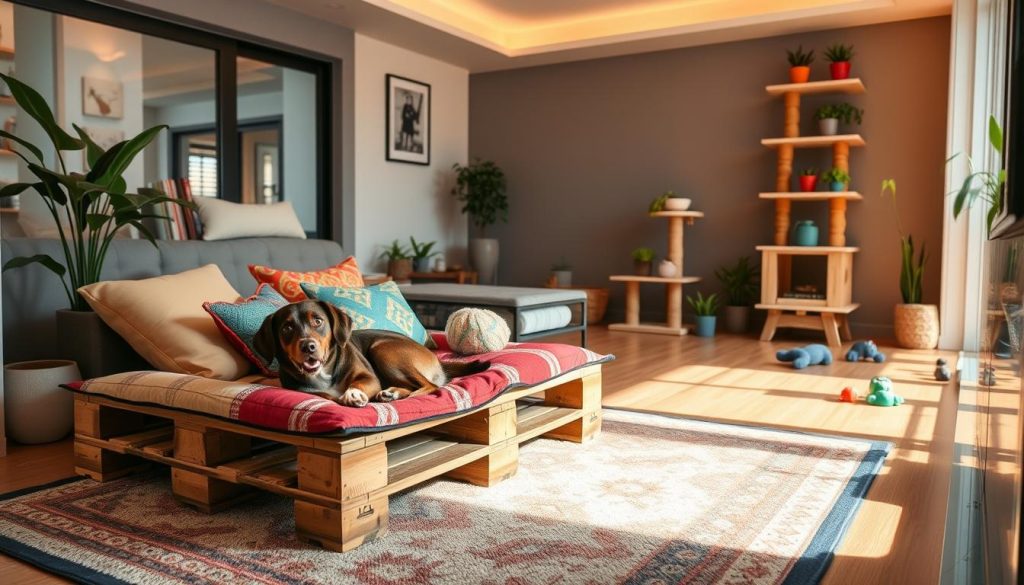
The cost of labor is a big part of home renovation expenses. Furthermore, some materials might be pricier for us than contractors. Also, some DIYs need costly tools, adding to budget worries. Below is a cost comparison for DIY versus pro renovations:
| Item | DIY Cost | Professional Cost |
|---|---|---|
| Tools/Equipment | Over $100 | Included in service |
| Labor | $0 (Self-service) | $70 – $200 per hour |
| Materials | Variable + potential markup | Wholesale prices |
| Specialized machinery | Not usually accessible | Provided by professionals |
While DIY pet-friendly upgrades feel rewarding and save money on pet-friendly upgrades, size matters. Small tasks like fitting lights or minor decor are doable. But, for big tasks that affect home safety or function, pros are best. They follow safety and building laws.
Also, think about the time and learning curve for DIY. Pros can finish jobs on a set schedule. DIY might take longer, causing discomfort in your living space.
How to Save Money
Learning to make your home and upgrades pet-friendly and cheap can ease money worries. By using pet-friendly budget solutions, homes become a loving space. And it won’t cost too much.
Start with picking strong materials like vinyl instead of wood for floors. Vinyl fights off scratches and water. It looks great and saves money. Using spaces you already have, like under the stairs, for pets can cut remodeling costs.
Choose pet-safe plants for outdoor areas. Stay away from bad chemicals. This keeps pets safe outdoors. It also makes your yard look nice. DIY projects, like cat doors, save money and are fun.
| Issue | % of Surrender Inquiries | Recommendations |
|---|---|---|
| Financial Strain | 50% | Contact pet food banks, seek veterinary discounts |
| Owner Passed Away | 25% | Have a pet care plan |
| Disinterest/Lifestyle Changes | 25% | Opt for re-homing, utilize Home to Home, Facebook groups |
Seniors can get special discounts to help with pet costs:
- Global Pet Foods: 15% discount on the last Tuesday of each month.
- Petland: 20% off regular-priced items on the last Thursday of the month with ClubPet membership.
- Sandman Hotel: 40% discount for seniors aged 55+, including additional perks.
Using these deals helps with pet care costs. It makes life better for pets and owners. Following these money-saving tips lets owners keep a happy home for pets.
Step-by-Step Upgrades
Making your home pet-friendly is great for you and your pets. More Americans now have pets. Adding pet-safe features is smart.
Start with the floors for step-by-step remodeling. Choose from hardwood, bamboo, or tile. They’re easy to clean and pet-proof.
Here’s a quick look at flooring for pets and their costs:
| Flooring Type | Benefits | Cost Variation |
|---|---|---|
| Hardwood | Durable, easy to clean, scratch-resistant | High |
| Bamboo | Eco-friendly, strong | Medium |
| Tile | Water-resistant, tough | Low to Medium |
For the outdoors, add pet-safe enhancements like steel deck railings. They’re safe for pets and look modern.
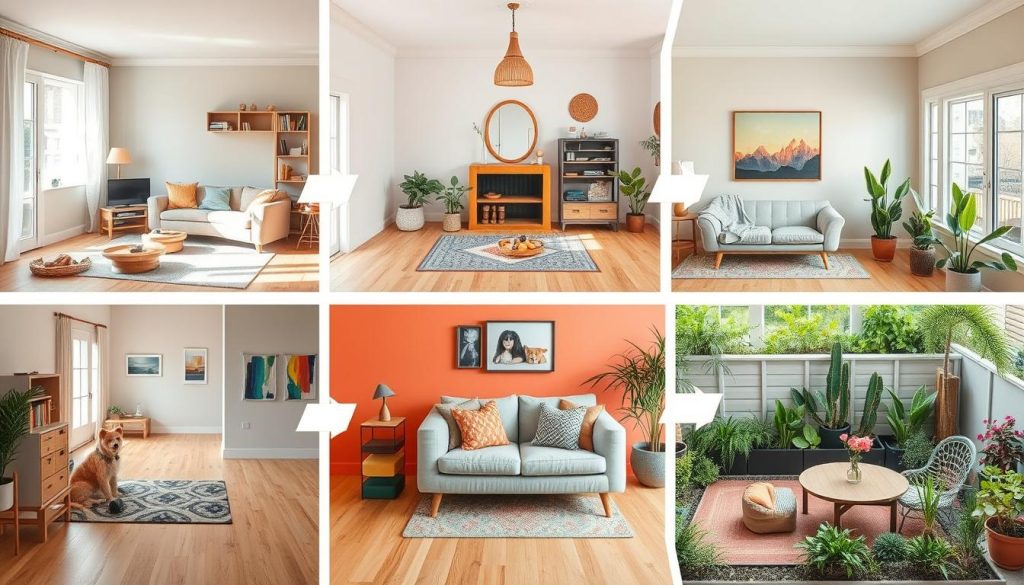
Add pet doors, fence your yard, and install pet-wash stations. These make your home safer for pets. They also increase your home’s value.
Homes with pet-friendly improvements attract more buyers. Especially those who love their pets. These features make your home more appealing.
By making these changes, you make everyone happier. Your home becomes cozier for you and your pets.
Final Tips for Success
When making your home pet-friendly, think about comfort for you and your pet. It’s important to create a safe and fun space for them. This isn’t just nice to have, it’s good for their well-being. Choosing tough floors like vinyl plank helps. It stands up to messes better. This shows how caring for pets affects home design.
About half of U.S. homes have dogs. So, adding things like a dog feeding area makes your home better. These details make life nicer for you and your pets. Also, more people are adding things like dog parks to their homes. This can even make your house worth more money.
Don’t forget to keep your pet safe while fixing up your home. Follow AVMA and AAHA to make sure they’re happy and healthy. Think about pet daycare when doing big projects. This can help keep stress down for everyone. Some builders also help animals in need. It shows our decisions matter more than we might think. All these steps lead to a great home for you and your pet.

